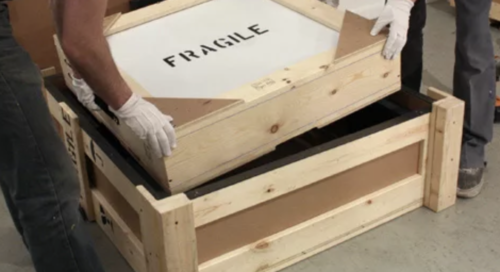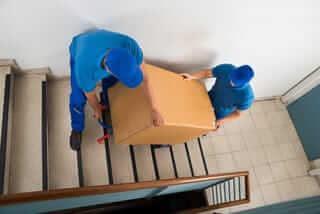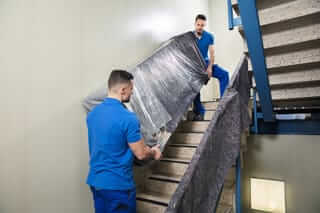The world of art is as diverse and unique as the individuals who create it. From glorious oil paintings and delicate porcelain figurines to towering sculptures and age-old antiques, each piece tells a story. But when the time comes to relocate these priceless items, that’s when many owners start to scratch their heads.
Ensuring that these treasures reach their new home unscathed requires a delicate blend of knowledge, skill, and careful planning. With every piece of artwork or antique being unique in its composition and care requirements, moving them isn’t a one-size-fits-all operation. In this article, we will delve into some practical tips on how to pack and transport different types of art and antiques, ensuring they remain as vibrant and intact as the day you fell in love with them.
Make an inventory of antiques and artwork
If you have a decent amount of fine art items you want to carry with you, make an inventory. But it’s more than just a list of your precious belongings. For each item, include its name, artist or maker (if known), dimensions, and a brief description of its physical condition.
Then, photograph each piece from multiple angles, capturing any unique features or existing damage. These photos will serve as visual proof of the item’s pre-move condition and will be incredibly valuable in case of any insurance claims.
If you haven’t done so already, consider getting your valuable pieces professionally appraised. You will need this for securing the right insurance coverage.
Does your antique grandfather clock require a special key to wind it, or does your oil painting need to be kept away from direct sunlight? Any special care instructions should be noted down in your inventory for each item.
Do your research on a moving company
Researching for the right moving company can make all the difference when it comes to the safe and smooth transition of your precious artwork and antiques. If you’d rather have professionals take the helm, here are some tips for finding the right moving company for you:
- Specialized expertise. Not all moving companies are equipped to handle the intricacies of moving artwork and antiques. Look for a company that specializes in this area. They should have trained staff, proper equipment, and a proven track record of successfully moving similar items.
- Ask for a reference. Don’t hesitate to ask for references from past clients who had similar needs. Online reviews can also be a good source of information.
- Insurance coverage. Ensure that the moving company offers comprehensive insurance coverage for your items. This will protect you in the unfortunate event of damage or loss during the move.
- Check certifications. Certifications from recognized bodies in the moving industry can attest to a company’s professionalism and standards. Look for companies with certifications from American Moving and Storage Association (AMSA), the Federal Motor Carrier Safety Administration (FMCSA), and the Better Business Bureau (BBB) as you conduct your research.
- Request a free quote. Once you have a shortlist of potential companies, request a free quote. This will give you an idea of the cost involved. Remember, don’t let price be your only deciding factor. The safety of your artwork and antiques is more important
How to move artwork and antiques on your own
While hiring professional movers always gives you peace of mind that your priceless belongings will be handled properly, you may consider dealing with the relocation on your own. But because every piece is unique and may require slightly different handling, the whole process can be somewhat daunting. Especially, if you have a collection of different types of art. Below, we’ll give you some general hints on how to deal with artwork and antiques.
How to relocate paintings, drawings, photography
Equipment and tools needed:
- Acid-free tissue paper
- Sturdy picture boxes
- Bubble wrap
- Packing tape
- Corner protectors
- Gloves
- Permanent marker
- Scissors
If your paintings or drawings are framed behind glass, apply painter’s tape in an ‘X’ shape over the glass. This will prevent the glass from shattering into many pieces in case of accidental breakage. It also keeps the glass in place, protecting the artwork. Then, cut out a piece of cardboard that matches the size of the painting and place it over the glass front. This serves as an additional layer of protection.
In case your art pieces do not have glass, cover the painting’s surface with acid-free tissue paper. This protects the artwork from dust, scratches, or potential chemical damage. Also, secure the corners of the artwork with corner protectors to prevent any dings or dents during the move.
Wrap the entire piece with bubble wrap, ensuring all parts are covered. Once wrapped, place the artwork in a picture box that matches its size. If you can’t find an exact fit, choose a slightly larger box and fill the excess space with bubble wrap or packing peanuts to prevent movement during transit.
Seal the box securely using packing tape. Label the box clearly with “Fragile – Handle with Care” and “This Side Up” to guide those handling it during the move.
Transport paintings upright, and never stack anything heavy on top of them. When using a moving truck, secure the artwork against a flat surface to prevent it from falling or shifting during the journey.
Also mind that oil, acrylic, and encaustic (wax-based) paintings require climate control within the truck. The reason behind this is that these types of paint are sensitive to temperature changes. Extreme heat can cause the paint to become soft and potentially warp or even melt. It can also lead to an unwanted glossy finish on the surface. On the other hand, too cold temperatures can cause the paint to crack or the canvas to become brittle.
How to move sculptures
Equipment and tools needed:
- Bubble wrap
- Packing tape
- Packing peanuts
- Custom crate
- Permanent marker
- Scissors
Sculptures, with their unique shapes, delicate materials, and often significant weight, require special attention during a move. Here are some steps to help you safely transport your prized sculptures.
The material of your sculpture will dictate the care needed. Bronze sculptures may require different handling than marble or ceramic ones. If your sculpture is made from a particularly delicate or unusual material, it might be best to consult with an art expert.
Begin by wrapping smaller, delicate parts of the sculpture with bubble wrap. Secure it with packing tape, ensuring that the tape doesn’t directly contact the sculpture’s surface.
For high-value and fragile sculptures, a custom crate provides the best protection. The crate should be large enough to house the sculpture and have sufficient padding, but not so large that the item can shift during transportation.
Once inside the crate, fill any empty space with packing peanuts or additional bubble wrap. Close the crate securely, ensuring that it’s well-reinforced with packing tape. Label it as “Fragile” and “This Side Up” to alert anyone handling it.
How to bring ceramics, porcelain, and glass to a new place
Equipment and tools needed:
- Sturdy boxes
- Packing paper
- Bubble wrap
- Packing tape
- Permanent marker
- Scissors
For particularly fragile or valuable pieces, consider purchasing specialty dish packs or boxes.
Wrap each item individually with packing paper. For more fragile pieces, bubble wrap provides an extra layer of protection. For items like vases or bowls, fill the hollow interior with crumpled packing paper. This provides internal support and helps prevent the item from shattering.
Place a layer of crumpled packing paper or bubble wrap at the bottom of the box for cushioning. After placing the item in the box, fill any remaining space with more crumpled paper or bubble wrap to prevent movement. Seal the box securely with packing tape and label it with “Fragile – Handle with Care.”
How to pack textile
Equipment and tools needed:
- Sturdy boxes
- Acid-free tissue paper
- Packing tape
- Permanent marker
- Scissors
- Clean cloth or soft brush
- Plastic sheets or bags
If you’re packing and moving antique textiles such as rugs, tapestries, and quilts, these tips are for you.
Before packing, ensure your textiles are clean. Dust and dirt can cause damage over time, especially during the stress of a move.
If you can, roll your textiles instead of folding them to prevent creasing and stress on the fibers. For rugs, start from the end that is opposite to the pile direction to avoid damaging the fibers.
If you need to fold the textile, use acid-free tissue paper to line the folds. This will prevent creases from setting and protect the fabric from potential damage. Use the same paper to wrap the entire piece before packing.
Ideally, pack textiles in specialty textile or wardrobe boxes. If these aren’t available, make sure to choose sturdy, clean boxes. Line the box with acid-free tissue paper for added protection. Don’t overfill the boxes. Textiles need a bit of breathing space, and overpacking can cause unnecessary stress on the fabrics.
If you’re not immediately unpacking your textiles, make sure they are stored in a temperature-controlled environment to avoid any damage from humidity, heat, or cold.
How to safely move furniture
Equipment and tools needed:
- Moving blankets and pads
- Stretch wrap
- Packing tape
- Bubble wrap
- Furniture sliders
- Moving straps
- Screwdrivers or power drill
- Ziplock bags
Start by cleaning your furniture and removing any items from drawers or shelves. This will prevent damage from loose items moving during transit and will also make the furniture lighter and easier to handle.
Take apart large furniture items if you can. Remove any protruding elements like table legs or headboards. Be sure to keep track of all screws, bolts, and other small parts by storing them in labeled ziplock bags. If you have to move a piano, here are 7 tips that will help you relocate this musical instrument.
Cover your furniture with moving blankets or pads, and secure them with stretch wrap. Use moving straps and furniture sliders to help move heavy or bulky items. Always bend at your knees, not your waist, when lifting heavy items. If an item is too heavy, don’t hesitate to ask for help or use a dolly.
When loading your furniture onto the moving truck, distribute the weight evenly. Heavier items should go on the bottom, and lighter ones on top. Use moving straps to secure items and prevent them from shifting during transit.
How to move your antique books
Equipment and tools needed:
- Acid-free tissue paper
- Archival quality boxes
- Bubble wrap
- Packing tape
- Permanent marker
Before packing, ensure your books are clean. Use a soft brush to gently remove dust from the cover and the edges of the pages.
If the books have dust jackets, consider covering them with a protective plastic cover. Alternatively, use acid-free tissue paper to wrap each book, which can protect against scuffing and other damage.
Pack the books flat in the box to prevent any damage to the spines. Start with the largest books at the bottom and work your way up to the smallest. If there’s any remaining space in the box after packing the books, fill it with crumpled acid-free paper or bubble wrap to prevent the books from moving around.
Avoid overpacking the boxes. Books are heavy, and overfilled boxes can be difficult to lift and may break under the weight.
Conclusion
<p>Moving fine artwork and antique items is not an easy job. From packing materials to techniques, from temperature control to inventory management, every step is important for ensuring that your precious belongings make it safely to a new destination.
Whether it’s your cherished paintings, delicate ceramics, antique furniture, or treasured antique books, these items require a level of expertise and attention to detail that’s beyond the scope of many moving companies.
ABA Moving is different. With our specialized knowledge, experience, and dedication, we are the perfect match for moving your artwork and antique items. We offer services tailored to the unique needs of each art or antique item, ensuring their safe, secure, and efficient relocation.
ABA Moving doesn’t just transport your items. We treat them with the care they deserve, taking every possible precaution to safeguard their condition. With ABA Moving, you’re not just choosing a moving company — you’re choosing peace of mind. Contact us today and we’ll provide you with a free quote for your move.










